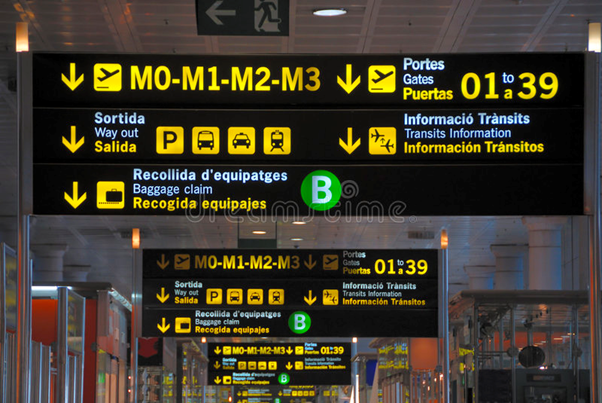Signs, Behaviour and Behavioural science: Where is the Meeting Ground?
CS:  Where does behavioural science stand in contemporary marketing and research?
Where does behavioural science stand in contemporary marketing and research?
FT:  In recent years, a couple of new disciplines have made their way into the consciousness of marketers and consumer insights managers. In the 80s, 90s and 00s, there were two kinds of research studies that marketers were concerned with – Quant Research and Qual Research. These drew upon background disciplines such as psychology, sociology, economics and statistics. The new disciplines which have moved from being just buzzwords are, in no particular order – Analytics, Semiotics, Behavioural Science and Design Thinking.
In recent years, a couple of new disciplines have made their way into the consciousness of marketers and consumer insights managers. In the 80s, 90s and 00s, there were two kinds of research studies that marketers were concerned with – Quant Research and Qual Research. These drew upon background disciplines such as psychology, sociology, economics and statistics. The new disciplines which have moved from being just buzzwords are, in no particular order – Analytics, Semiotics, Behavioural Science and Design Thinking.
CS:  What’s the connection, if any, between behavioural science and semiotics?
What’s the connection, if any, between behavioural science and semiotics?
FT:  Behavioural science offers a scientific study of the choices and decision-making that lead to behaviours, keeping in mind that people do not make “rational” choices as Scientists and mainstream economists would like them to. The intent is to change behaviours in the direction that a policy maker or business leader wants.
Behavioural science offers a scientific study of the choices and decision-making that lead to behaviours, keeping in mind that people do not make “rational” choices as Scientists and mainstream economists would like them to. The intent is to change behaviours in the direction that a policy maker or business leader wants.
When behavioural scientists have completed their experiments and have to design solutions on the basis of the insights from their studies, they then face the reality of designing communication and interventions that will bring about the desired behaviour change. That’s when they get interested in signs, signification and semiotics more broadly.
1. CS:  So, is there a meeting ground between Behavioural Science and Semiotics?
So, is there a meeting ground between Behavioural Science and Semiotics?
FT: As a Semiotician, I was asked to theorize about the meeting ground between signs and behavioural science and here is my view.
As a Semiotician, I was asked to theorize about the meeting ground between signs and behavioural science and here is my view.
The core binary to consider is the one between open spaces, open systems and enclosed spaces, closed systems. The semiotics of enclosed spaces/systems (closed environments) and open spaces/systems (open environments) is entirely different when considering their intended impact on human behaviour / behaviour change.
Let us look at some of the closed environments that users encounter in their everyday life. In urban environments, these are plenty. Think of roads, airports, metro stations, train stations, office buildings, office spaces and even the inside of homes. These environments are found in the real world. On the Internet, most websites, especially e-commerce sites are at least partially closed environments.
Closed environments work on a conceptual model of compliance not choice. In such spaces and systems, there are rule makers and rule takers. Users are rule takers to a large extent. The degrees of freedom for users to deviate from the set path to make their own choices is very limited, with some differences from place to place. Airports offer less freedom to deviate than railway stations for e.g.
The more authoritarian the attitude of the rule makers, the less the viewpoints of users matters. The more democratic and egalitarian the attitude of the rule makers, more importance is given to the needs and viewpoints of users, in the design of the space as well as the rules of compliance. Thus, the role and use of signs in closed environments calls for a different type of meeting ground between semiotics and behavioural science than when open environments are being discussed.
In e-commerce sites, as long as the shopper is browsing, they operate in a relatively open environment, because they can follow any path they want through the website and jump off too. Once they are on the purchase path, their options are more limited and they have to complete the set path, if they want to close the sale.
CS:  Could you give an example of the use of signs in closed environments?
Could you give an example of the use of signs in closed environments?
FT: Within closed environments, enabling spatial and object navigation is the primary goal of sign construction. After the user enters the closed environment, he/she has limited freedom to exit or leave the environment, except as decided by the rule makers. Whereas, in open environments, the user can enter and exit at any time, based on his/her own inclinations.
Within closed environments, enabling spatial and object navigation is the primary goal of sign construction. After the user enters the closed environment, he/she has limited freedom to exit or leave the environment, except as decided by the rule makers. Whereas, in open environments, the user can enter and exit at any time, based on his/her own inclinations.
 Take airports for instance. The entry and exit points to modern airports are already set by the architects and urban planners. Departures are at the upper level, Arrivals at the lower level, the roads bifurcate to take the traveller to the right spot. There are signages both in written language and using visual icons to help the traveller navigate the space. And so it goes, through the entire space.
Take airports for instance. The entry and exit points to modern airports are already set by the architects and urban planners. Departures are at the upper level, Arrivals at the lower level, the roads bifurcate to take the traveller to the right spot. There are signages both in written language and using visual icons to help the traveller navigate the space. And so it goes, through the entire space.
The visual-verbal signs for navigation are further supported by instructions and announcements that repeat the prohibited actions. The Delhi metro is similarly designed with a combination of visual icons, written signs and announcements about the prohibited behaviours with the penalties for defaulting from the desired behaviours.


 Aside from navigation, such closed environments, also need to design for interfaces between users and service providers/officials in order to interact and communicate with one another. Since the outbreak of covid, the interfaces between travellers and officials at airports were altered by bringing in a transparent glass/plastic barrier. This barrier changed the meaning of the interaction from the way it was earlier, from more open and free to becoming more contained and fearful.
Aside from navigation, such closed environments, also need to design for interfaces between users and service providers/officials in order to interact and communicate with one another. Since the outbreak of covid, the interfaces between travellers and officials at airports were altered by bringing in a transparent glass/plastic barrier. This barrier changed the meaning of the interaction from the way it was earlier, from more open and free to becoming more contained and fearful.
2. CS:  What can a Semiotician bring to the table when working with a behavioural scientist in the design of enclosed spaces?
What can a Semiotician bring to the table when working with a behavioural scientist in the design of enclosed spaces?
FT: A Semiotician brings to the discussions and solution development, a deeper understanding of Semiosis, or how signs work. How can signs be effective or ineffective? Ineffective signs are inefficient, a waste of time, money and effort. They can also create further problems. Signs can become ineffective or fail in multiple ways.
A Semiotician brings to the discussions and solution development, a deeper understanding of Semiosis, or how signs work. How can signs be effective or ineffective? Ineffective signs are inefficient, a waste of time, money and effort. They can also create further problems. Signs can become ineffective or fail in multiple ways.
- Lack of attention: Signs can be overlooked, not noticed and hence not attended to. When users don’t pay attention to or ignore the signs, they can misbehave, make mistakes and create problems. The common sense solution to this problem is to become more intrusive – flashing lights, barriers and blockages and huge sizes in signages, as well as louder voices and aggressive voice tonalities. The problem with this solution is that it makes the user experience of the space unpleasant and negative. Superior solutions developed by a team of semioticians, behavioural scientists and designers can help find more creative, more engaging and positive solutions to the problem of lack of attention.
- Lack of comprehension: Signs are not understood, there is lack of comprehension by users. This calls for a complete redesign of the signs keeping in mind the prior learning and habits of users. Semioticians can point out potential pitfalls, prior to user testing because they are trained for attention to small details that are easily overlooked. They can also provide possible alternative routes or platforms for sign construction, based on culturally relevant material.
- Poor synthesis of modes: Semioticians can examine the effects of multi-modality, that is when signs in multiple modes are combined together. There are visual icons, written messages and audio instructions. How well do these come together to create a unified whole that is meaningful to users? Or are they all pulling in different directions such that there is incoherence and the desired impact on users behaviours does not take place.
- Risk of being mis-understood or negatively interpreted: Sometimes the visual similarity of signs to culturally taboo or difficult topics or issues with the use of words and expressions can trip up the creators and owners. These risks have risen significantly after the mainstreaming of social media.
3. CS: Are there different kinds of signs? Classification systems and sign typologies?
Are there different kinds of signs? Classification systems and sign typologies?
A handy reference guide that non-semioticians can dip into?
FT: Since there are millions and millions of signs in the world, they can be classified in very many ways. A very basic one is in terms of their form and mode of existence – visual, verbal, auditory etc. Charles Sanders Peirce, one of the founding fathers of modern semiotics developed an elaborate classification system of 66 classes of signs. His classification was based on how semiosis takes place – as a combination of how signs represent objects and the logic through which signs are interpreted. In practice, this elaborate sign typology is almost never used by anyone, because it is too cumbersome.
Since there are millions and millions of signs in the world, they can be classified in very many ways. A very basic one is in terms of their form and mode of existence – visual, verbal, auditory etc. Charles Sanders Peirce, one of the founding fathers of modern semiotics developed an elaborate classification system of 66 classes of signs. His classification was based on how semiosis takes place – as a combination of how signs represent objects and the logic through which signs are interpreted. In practice, this elaborate sign typology is almost never used by anyone, because it is too cumbersome.
From a behavioural standpoint, a simple, four level classification based upon the intended psychological effect of the sign can be useful. For this, I draw upon the work of Prof. Leonid Tchertov.
Signs can be Pictograms that work at a pre-cognitive level, through a simple matching of visual elements. Most visual icons used in public spaces, work in this way as navigation aids. The user does not need to pause, think and process the sign. Matching can take place at speed, due to past learning and habit formation. Thus navigating the space becomes smooth and easy. There is less scope for confusion or errors.
Signs can also be Perceptograms and Sensograms. These fill in more details and evoke sensory effects through visual treatments. Such signs are processed cognitively to comprehend them and use them for navigation or interface. In the Delhi Airport, washroom entrances use a big, colour photograph of an elaborately dressed man or woman. Such a sign is a Perceptogram.
The most sophisticated type of sign is the Ideogram, one that relies on cultural symbolism and symbolic layering to evoke emotions as well as convey information. Ideograms are mostly used in advertising campaigns or similar material. They are not used when the goal is to aid smooth navigation or interface, because they require more thought and there is also more room for alternative interpretations.
CS: Hey, I got some good fundas from this conversation. But we only covered signs in closed environments. So, can we talk about signs in open environments in a subsequent conversation.
Hey, I got some good fundas from this conversation. But we only covered signs in closed environments. So, can we talk about signs in open environments in a subsequent conversation.
FT: Sure, I am looking forward to that. All curious seekers out there, I hope you are looking forward to the next conversation in this dialogue series.
Sure, I am looking forward to that. All curious seekers out there, I hope you are looking forward to the next conversation in this dialogue series.

